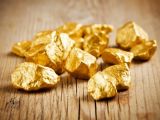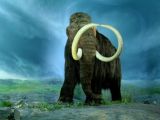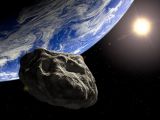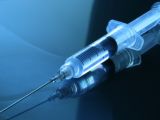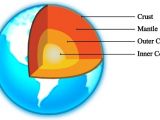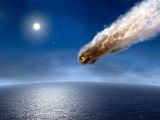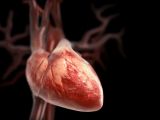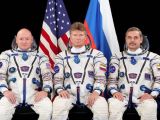It’s been another week, which can only mean one thing: it’s time to recap the coolest and most importance science news and announcements of the past few days.
Not that research is ever dull, but we dare say that this week was especially exciting for the world of science. Curious why this was? Well then, read on to find out.
10. High-fat foods argued to make the brain swell up
We all have bacteria living in our entrails. Depending on what we eat, we each get a rather unique population of such microorganisms. In a series of experiments, researchers transplanted gut bacteria taken from mice kept on a high-fat diet into regular rodents.
Having receiving these bacteria, the mice that the scientists toyed with started showing signs of inflammation in their body and especially in their brain. What’s more, their behavior changed and they began displaying signs of anxiety, depression and memory loss.
Although these experiments were carried out on rodents, the specialists who conducted them suspect that high-fat foods like pizza, hamburgers and the like might also cause inflammation in humans and, in doing so, take their toll on an individual’s mental health.
9. Scientists announced plans to mine poop for gold
According to a recent study, the waste annually produced by one million folks in the US contains about $13 million (€12 million) worth of gold and other valuable metals. This is because detergents, hair care products, electronics and other things that make our life easier all contain such materials.
Scientists are now working on figuring out a way to recover these precious metals when, after making their way down the drain, they eventually reach waste treatment facilities. That’s right, researchers are actually considering mining poop for gold and other valuable materials.
Mind you, it’s not just financial considerations that are behind this rather peculiar and kind of gross research project. As explained by specialists, recovering gold and other metals from waste means keeping these materials from reaching natural ecosystems and damaging them.
8. Mammoth DNA planted in living elephant cells
As it turns out, it might be only a matter of time until woolly mammoths come back to life. Thus, a team of scientists claim to have successfully inserted genetic material belonging to this species in living cells taken from elephants.
The scientists didn’t create an actual woolly mammoth clone. What was transplanted into the living elephant cells was not a woolly mammoth’s entire genome, but just bits and pieces of DNA recovered from specimens dug out over the years.
Besides, the resulting elephant cells containing mammoth DNA never left the lab dishes in which they were created, and a bunch of cells is a long way from a real animal. Still, it looks like genetic engineering might, in fact, bring back woolly mammoths.
7. NASA detailed plans to pillage unsuspecting asteroid
Come 2020, NASA wants to send a spacecraft to an asteroid and have it pillage the space rock. More precisely, it hopes that its spacecraft will manage to steal a boulder about 13 feet (4 meters) across from the asteroid’s surface.
This boulder will then be made to orbit the Moon and turned into some sort of a space playground for astronauts, meaning that crews will visit it on a regular basis to study it and even collect samples that will be examined in labs down on Earth.
This Asteroid Redirect Mission (ARM, for short) should give NASA the chance to study technologies that the agency hopes will one day deliver crews to other planets. As for the trips astronauts will make to the retrieved boulder, these should help train them for future space adventures.
6. Ebola vaccine confirmed safe and effective in trial
The latest Ebola epidemic in West Africa claimed thousands of lives. Hoping to prevent such a major outbreak from ever happening again, scientists are now hard at work trying to develop both vaccines and treatments for the Ebola disease.
Of the vaccines that are now being developed, one was recently proven safe and effective in a clinical trial involving human volunteers. The study participants all produced more antibodies following inoculation and no serious side effects were reported.
Still, it looks like the scientists who created and tested the vaccine don’t yet know whether or not it can protect people against Ebola. This is because it is unclear whether the antibodies produced in response to the vaccine were of the kind that can fight Ebola.
5. Earth’s mantle said to pack a secret, oddly stiff layer
Researchers believe to have found evidence that the anatomy of our planet’s mantle, essentially a layer of molten and, therefore, highly malleable rock, is more complex that previously assumed. Apparently, Earth is more like an onion than we imagine.
In a report detailing their work, the specialists behind this investigation propose the existence of a secret and oddly stiff layer in the planet’s mantle, at a depth of about 930 miles (approximately 1,500 kilometers) below the surface of the Earth.
If this layer does, in fact, exist, its presence in the mantle would explain why slabs falling through Earth's mantle stop for a while at said depth before continuing their journey downwards. The theorized layer could also explain the distinct profile of magma produced by different volcanoes.
4. A pretty big asteroid flew by our planet, sort of
This past Friday, March 27, an asteroid flew by Earth. Well, sort of. It actually passed us by at a distance of about 4.5 million kilometers (2.8 million miles), which is about 11.6 times the distance between our planet and the Moon, so this cosmic visit went pretty much unnoticed.
The asteroid, measuring between 440 and 990 meters (1,440 and 3,250 feet) across at its widest point, goes by the name of 2014-YB35. It was discovered back in last year’s December and astronomers have until now observed it on nearly 400 occasions.
Another space rock of a similar size flew by us earlier this year, on January 26. This other asteroid, dubbed 2004-BL86, came within 1.2 million kilometers (750,000 miles) of our planet. During this visit, astronomers found the asteroid to have a moon of its own.
3. Patient transplanted dead and resuscitated heart
A report published earlier this week details a groundbreaking surgical intervention during which a 60-year-old man was transplanted a dead and resuscitated heart. The surgery, carried out in the UK, was a medical first in Europe.
The specialists who handled this case explain that, before transplanting the organ, they resurrected it while still inside the donor’s body. Having removed it, they kept it in a machine and administered it blood and nutrients for a few hours before finally placing it in the 60-year-old’s chest.
It is understood that, prior to this intervention, the patient was in such poor condition that he could not even walk on his own. He now feels much better and his doctors expect that, in the weeks to come, his condition will continue to improve to a considerable extent.
2. Boeing patented super cool laser-made force field
It just so happens that American multinational corporation Boeing has some seriously big plans for the future. Long story short, it wants to develop a technology that will allow aircraft, cars and ships to use lasers to create force fields for themselves.
As detailed in the patent for this innovative concept, Boeing imagines fitting planes, vehicles and vessels with lasers that, when fired following an explosion, heat the air and cause plasma of a temperature and density different to that of the surrounding environment to form.
It is this plasma that the multinational corporation believes can act as a force field and keep aircraft, cars and ships safe from shockwaves. In case anyone was wondering, the official name for this technology is Shockwave attenuation via electromagnetic arc.
1. One-year crew made it aboard the International Space Station
This week, the International Space Station welcomed three more astronauts: NASA’s Scott Kelly, and Mikhail Kornienko and Gennady Padalka of Roscosmos. Of these adventurers, Scott Kelly and Mikhail Kornienko will spend almost an entire year aboard the habitable satellite.
The spacecraft carrying the astronauts launched from the Baikonur Cosmodrome in Kazakhstan on March 27, at 3:42 EDT. About 8 hours later, the trio was aboard the International Space Station together with the other members of Expedition 43.
During their one-year mission aboard the habitable satellite, Scott Kelly and Mikhail Kornienko will be closely monitored to see how space conditions affect both their physical and their mental health. The data obtained in this manner will help plan future space missions.
Well, there you have them, the week’s coolest and most important pieces of news. If you’re the kind of guy or gal who likes to keep tabs on what researchers are up to these days, be sure to check this page again next Sunday for another round-up.
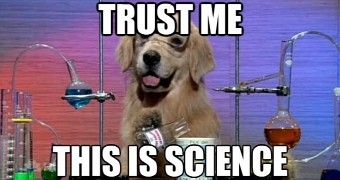
 14 DAY TRIAL //
14 DAY TRIAL // 

